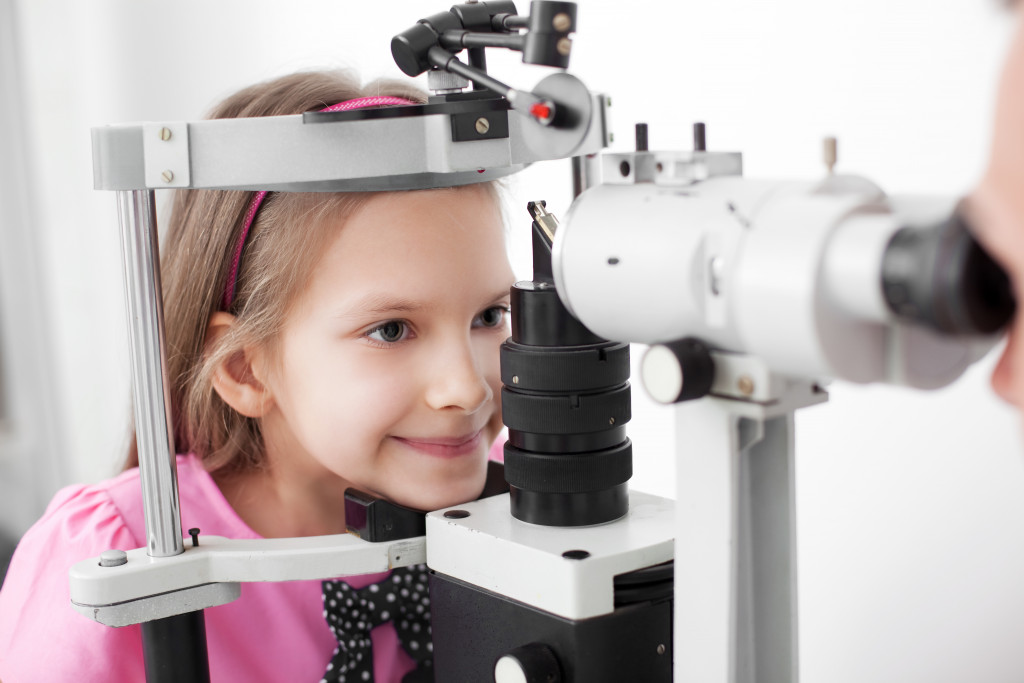Almost everyone knows at least one person who has gone blind. It’s a frightening thing, and it’s hard to imagine what life must be like without sight. But what many people don’t know is that several eye conditions can lead to vision loss. In this article, we will look at some of the most common eye conditions that can lead to vision loss.
Glaucoma
Glaucoma is a group of eye conditions that can lead to vision loss. It occurs when the optic nerve is damaged. This can happen when the pressure inside the eye is too high. Open-angle and angle-closure are the two common types of glaucoma. Of the two, open-angle is the most common type. This type of glaucoma happens slowly over time. Angle-closure glaucoma comes on suddenly and is a medical emergency. Glaucoma can happen to anyone, but it is more common in older adults and people who have a family history of the condition. It is also more common in African Americans and Hispanics/Latinos.
There is no cure for glaucoma, but early diagnosis and some glaucoma treatment options can help prevent or slow vision loss. These treatments can even help reduce the symptoms of glaucoma and lead to better vision. Treatment usually involves medication to lower the pressure inside the eye. In some cases, surgery may be needed. If you have glaucoma, it is important to see your doctor regularly so that your condition can be monitored and treated if necessary.
Cataracts
Cataracts are a common eye condition that can cause vision loss. They occur when the eye’s lens becomes cloudy, making it difficult to see clearly. Cataracts usually develop slowly and can eventually cause complete blindness. Early diagnosis and treatment are essential to preserving vision. There are two main types of cataracts: nuclear cataracts and cortical cataracts. Nuclear cataracts form in the center of the lens and often affect people as they age. Cortical cataracts start at the edges of the lens and typically occur in younger people. Cataracts can also be caused by trauma, certain medications, or diabetes. Treatment for cataracts typically involves surgery to remove the cloudy lens and replace it with an artificial one. With early diagnosis and treatment, most people with cataracts can maintain good vision.
Age-Related Macular Degeneration
Age-related macular degeneration (AMD) is a painless eye condition that usually affects older adults. It gradually destroys sharp, central vision. As AMD progresses, seeing objects becomes more difficult. Objects may appear blurry, distorted, or less bright. A small spot in the center of your vision may become dark. You may have trouble seeing faces. AMD affects the macula, which is the part of the eye needed for sharp vision when looking directly at an object. The macula also allows you to see fine details. There are two types of age-related macular degeneration: dry and wet.
Dry AMD is by far the most common type of AMD. In dry AMD, thinning of the macula occurs over time because cells in the macula gradually break down. As this process happens, you lose central vision ever so slowly that you may not notice any changes for a long time. On the other hand, wet AMD is a condition where some abnormal blood vessels located behind the light-sensitive tissue retina grow toward the macula. These abnormal blood vessels start leaking blood and fluid under the macula, causing it to swell and distorting central vision.

While there is no cure for AMD, treatments can sometimes help slow vision loss. In some cases, vision can even be improved. For dry AMD, treatments include taking vitamins, eating a healthy diet, and not smoking. There is no approved treatment for wet AMD, but there are clinical trials underway testing new treatments.
Diabetic Retinopathy
Diabetic Retinopathy is a condition that affects the retina, and it is the leading cause of blindness in people with diabetes. Diabetic Retinopathy occurs when the blood vessels in the retina become damaged. This can happen for several reasons, but high glucose levels in the blood most often cause it.
If you have Diabetic Retinopathy, you may not experience any symptoms in the early stages of the disease. However, as it progresses, you may start to experience vision loss, difficulty seeing at night, and difficulty reading. If you have any of these symptoms, it is important to see an eye doctor so that he or she can diagnose and treat the condition. You can go to the Eye Surgeons of Indiana for the best treatment and cure. They have specialists who have expertise in treating diabetic retinopathy, glaucoma, and other eye problems. Hence, it is best to consult with the doctors who are experts at what they do.
Retinitis Pigmentosa
It is a group of eye conditions that lead to vision loss. RP usually affects the retina. The retina converts light into electrical signals sent to the brain, where they are translated into the images we see. The retina slowly breaks down in people with RP, resulting in vision loss. Symptoms of RP typically begin in childhood or adolescence and progress slowly over time.
In some cases, RP can cause complete blindness. There are currently no treatments available to stop or reverse the progression of RP. However, some steps can improve vision and quality of life for people with this condition. Early diagnosis and treatment are important for maximizing vision and function. Regular eye exams can help detect RP early on and allow for early intervention. People with RP should also avoid smoking, which can accelerate vision loss. There is currently no cure for RP, but research is ongoing in hopes of finding one. In the meantime, people with this condition can take steps to preserve their vision and maintain a good quality of life.
These are just a few eye conditions that can lead to vision loss. If you are experiencing any symptoms of these conditions, it is important to see an eye doctor. Early diagnosis and treatment are essential in preserving your vision.

